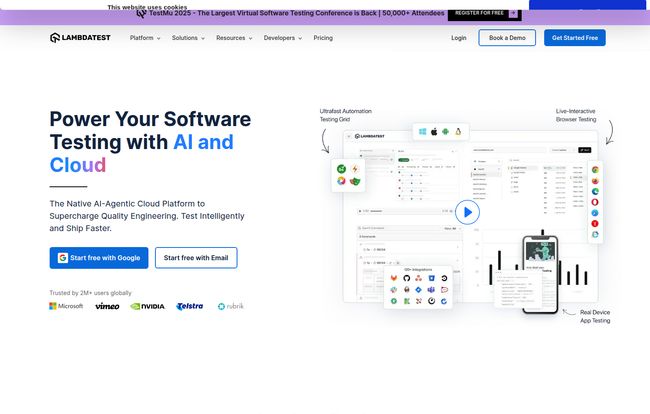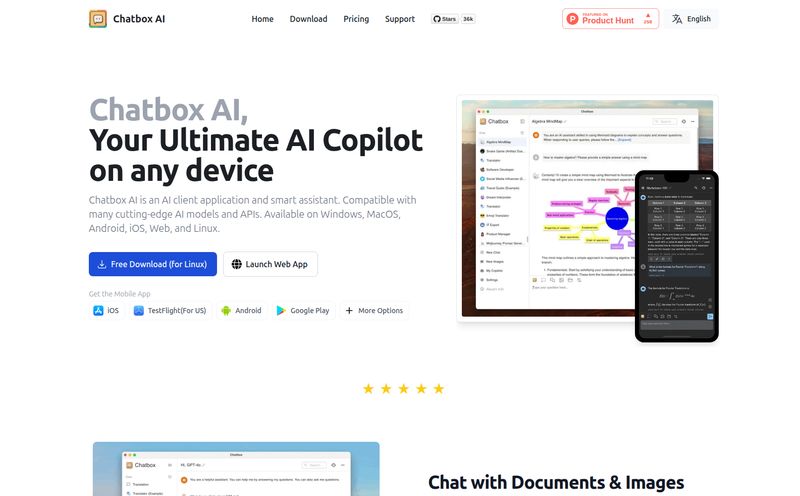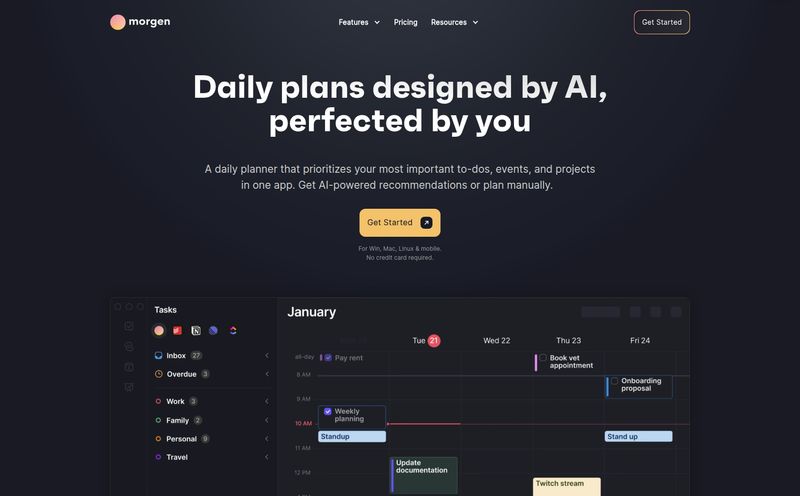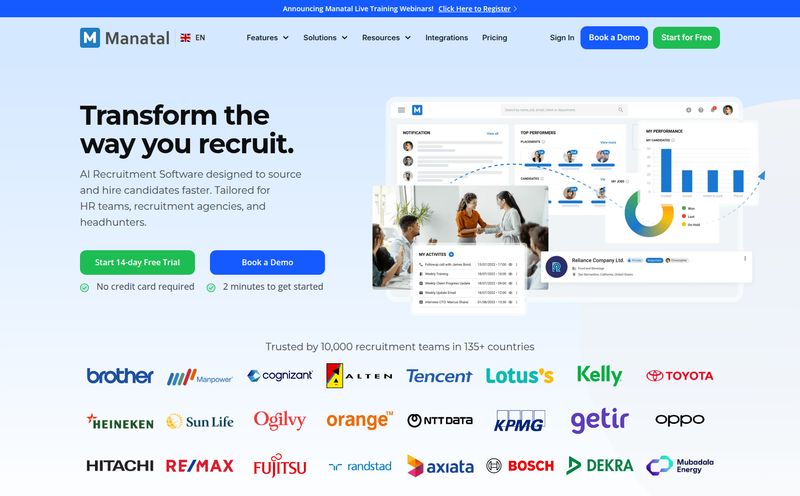If you’ve ever been a developer or part of a QA team, you know the special kind of pain that comes from cross-browser testing. You know, that sinking feeling when your beautiful, perfectly functional app works on Chrome, but on Safari for iOS 15.3 it looks like a Picasso painting after a rough night out. We've all been there. I remember one project where a single rogue CSS property on an old version of Firefox cost us days of bug hunting. Days!
For years, the solution was a clunky mess of virtual machines, a physical library of aging phones, and a whole lot of caffeine. It was slow, expensive, and just… frustrating. So when platforms like LambdaTest started popping up, claiming to be a “unified testing cloud,” my cynical veteran-dev ears perked up. Another buzzword? Or something actually useful?
I’ve been kicking the tires on LambdaTest for a while now, and I’m ready to share my honest-to-goodness thoughts. This isn’t going to be a simple regurgitation of their marketing copy. We’re going to look at what it does, who its for, where it shines, and where it might fall a bit short.
So, What Is LambdaTest, Really?
Forget the corporate-speak for a moment. At its heart, LambdaTest is like a giant, shared garage packed with every digital tool and device you could ever need to test your website or app. It's a cloud-based platform where you can check your creation on thousands of different combinations of browsers, operating systems, and real, physical devices. No more hoarding old iPhones or running laggy VMs on your machine.
They call it a “unified testing cloud,” and that’s a pretty accurate description. It brings together a whole suite of testing activities that used to be scattered across different tools. You’ve got your manual live testing, your heavy-duty automated test runs, and even some slick AI-powered analysis all under one roof. It’s built for modern engineering teams that need to move fast without breaking everything in sight.

Visit LambdaTest
The Core Features That Actually Matter
A platform can have a million features, but only a handful truly change your workflow. After spending some time in the trenches with it, here are the parts of LambdaTest that I found genuinely impactful.
Taming the Cross-Browser Beast
This is its bread and butter. You can instantly fire up a live session on, say, Windows 11 with Chrome 108, or macOS Ventura with Safari 16. It’s incredibly useful for squashing those specific, annoying bugs that only appear in one environment. But the real power comes from the automation. You can take your existing test scripts—written in popular frameworks like Selenium or Playwright—and run them across dozens of browser configurations in parallel. What used to take hours of sequential testing can now be done in minutes. That’s a game-changer for any serious CI/CD pipeline.
Getting Real with the Real Device Cloud
Emulators and simulators are fine, but they’re not the real thing. They can’t replicate battery drain, network interruptions, or the quirks of a specific device's hardware. LambdaTest offers a cloud of actual, physical iPhones, Android devices, and tablets. You can run your mobile app tests on a real Samsung Galaxy S23 or an iPhone 14 Pro. This is huge for mobile-first companies. Finding and fixing a bug that only appears on a specific model before your users do? That’s worth its weight in gold and positive app store reviews.
HyperExecute for the Seriously Impatient
I’ll admit, the name “HyperExecute” sounds a bit like a Saturday morning cartoon super-weapon. But what it does is pretty cool. It’s their test orchestration tool, designed to run automated tests at frankly ridiculous speeds. It intelligently groups tests and distributes them across its grid to minimize run time. For large test suites, this can cut execution time down by a huge margin. The faster your tests run, the faster your team gets feedback, and the faster you can ship code. It’s all about shrinking that feedback loop.
The AI in the Room: Test Intelligence & KaneAI
This is where things get interesting and a bit futuristic. LambdaTest is leaning heavily into AI. Its Test Intelligence dashboard provides deep analytics on your test runs. It can spot flaky tests, highlight common failure points, and give you a high-level view of your application's health. It’s like having a data scientist constantly analyzing your QA process. Then there's KaneAI, their new Generative AI agent. It's still in beta, but the promise is big: helping to write and maintain test code using natural language. It’s a bold move, and while it's not perfect yet, it shows where the industry is headed. I'm excited to see how this matures.
The Good, The Bad, and The Pricey
No tool is perfect. Let's get down to the brass tacks.
What I Genuinely Like about LambdaTest
The sheer comprehensiveness is the biggest win for me. Having manual, automated, web, and mobile testing in one place simplifies so much. You’re not juggling subscriptions and logins for five different services. The integrations are also top-notch. It plugs right into tools we all use every day like Jira, Slack, Asana, and GitHub. When a test fails, it can automatically create a Jira ticket with all the logs and a video recording of the session. That alone saves so much back-and-forth. It’s a well-thought-out ecosystem.
Where It Stumbles (Just a Little)
With great power comes a potentially steep learning curve. If you're new to automated testing, the sheer number of options and configurations can feel a bit much at first. It's not a simple plug-and-play tool for a total beginner, it's a professional-grade platform. My other main gripe, and it's a common one for platforms this powerful, is the cost. For a solo developer or a very small team, the pricing might be a bit steep, especialy when you need multiple parallel tests. It's an investment, for sure.
Let's Talk Money: A Breakdown of LambdaTest Pricing
Pricing can often be a make-or-break issue, so lets break it down simply. I appreciate that they have a free-forever tier, which is more than a lot of competitors offer. It’s a great way to try things out.
| Plan | Price (per parallel test/month) | Best For |
|---|---|---|
| Free | $0 | Individuals or small teams wanting to explore the platform and run occasional tests. |
| Live | $15 | Freelancers and teams focused primarily on live, interactive manual testing. |
| Real Device | $25 | Teams that need to run tests on real mobile devices and are serious about mobile app quality. |
| Enterprise | Contact Sales | Large organizations with needs for high security, many parallel tests, and dedicated support. |
Note: These prices are based on the information available at the time of writing. Always check their official pricing page for the most current details. The key thing to understand is the “parallel test” concept. One parallel test means you can run one test at a time. If you want to run 10 tests simultaneously, you need 10 parallel tests, and the cost scales accordingly.
Who is This Platform Really For?
After all this, who should sign up? In my opinion, LambdaTest hits the sweet spot for a few groups:
- Growing Startups: Companies that have found product-market fit and now need to scale their QA process without hiring a massive team.
- Digital Agencies: Agencies building websites and apps for multiple clients need a reliable way to test across a huge matrix of devices and browsers.
- Established Enterprises: Large companies with complex applications and a strong focus on quality and security will find the enterprise features and scalability invaluable.
If you're a student or a hobbyist just building a personal project, the free tier is fantastic. But if you’re looking to invest in a paid plan, it’s because quality and speed are direct contributors to your bottom line.
Frequently Asked Questions
- What exactly is a parallel test?
- Think of it like checkout lanes at a grocery store. If you have one lane (1 parallel test), you can only check out one customer (run one test) at a time. If you have 10 lanes (10 parallel tests), you can check out 10 customers at once. More parallel tests means your entire suite of tests finishes much faster.
- Can I integrate LambdaTest with my CI/CD pipeline?
- Absolutely. This is one of its core strengths. It has plugins and integrations for virtually every major CI/CD tool, including Jenkins, CircleCI, GitLab, GitHub Actions, and more. You can trigger your test runs automatically whenever new code is pushed.
- Is the free plan actually useful?
- Yes, it is. It's not designed for heavy-duty, large-scale testing, but it's perfect for getting familiar with the platform, running occasional manual checks, and debugging a specific browser issue. It gives you a real feel for the interface and capabilities before you commit any money.
- How does the AI feature, KaneAI, work?
- KaneAI is a generative AI agent. The idea is that you can give it instructions in plain English, like "Create a test to verify the login page functionality," and it will generate the corresponding automation script. It also aims to help in maintaining existing tests by identifying and fixing broken locators. It's still evolving, but it's a very powerful concept.
- What's the big deal about real devices vs. emulators?
- Emulators are software that mimics device hardware. They're good, but not perfect. Real devices are the actual physical phones. They account for real-world conditions like OS-specific bugs, manufacturer skins (like on Samsung phones), and hardware performance. For pixel-perfect UIs and mission-critical apps, testing on real devices is non-negotiable.
My Final Verdict on LambdaTest
So, is LambdaTest the holy grail of QA testing? Well, it's getting pretty close. It's a seriously powerful, comprehensive, and forward-thinking platform. It successfully pulls together the disparate threads of software testing into one, mostly cohesive package. It's not the cheapest tool on the block, and it has a learning curve, but you're paying for capability and speed.
For any team that is serious about the quality of their digital product, LambdaTest is an investment that can pay for itself many times over in saved time, fewer bugs, and happier users. It turns the chore of testing into a streamlined, integrated part of the development lifecycle. And for that, it gets a solid nod of approval from me.



